Jump to section:
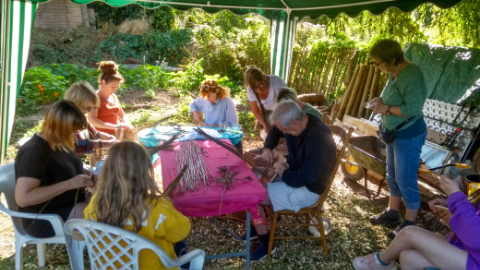
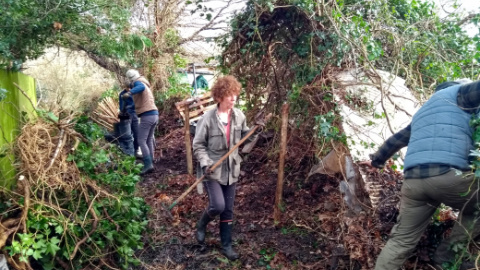
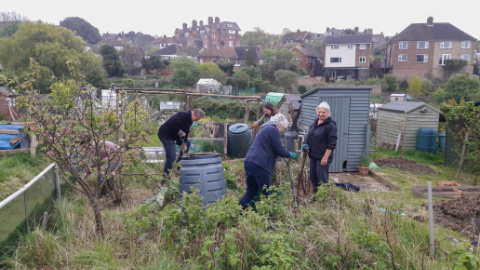
Welcome to Marina Allotments
Welcome to Marina Allotments, and congratulations on joining the only self-managed site in Hastings and St Leonards. We’re also by far the biggest site in the area, covering some six acres with plots of varying sizes and a membership in excess of 200 full members (plot holders) and associate members. It’s well worth taking a walk around to explore some of the other plots, get a feel for the place, soak up the community spirit and enjoy the outstanding views, which we think are the best in town.
We have been self-managed since 1992. That brings various advantages, but it brings responsibilities too. We don’t have to rely on a cash-strapped, under-resourced Council to get stuff done. We can manage the allotment the way we think is best. But, of course, we have to actually do it, if we don’t do things, they don’t get done. There is no ‘they’, as in ‘they’ll take care of it’ or even, ‘they won’t do anything, they never do’. There is only us. Fundamentally, being self-managed means that it is up to all of us to create the kind of allotment we want to be a part of.
The allotment is managed by a volunteer committee, which is elected by the membership as a whole each year at the AGM. But every member is strongly encouraged to become involved in running and improving the site in whatever way they can – and that means you! We always need people to help run events, maintain communal areas and volunteer in the shop, amongst many other tasks. As a community allotment, we only work if the community comes together to help out, so there is an expectation that members put at least some time into volunteering when they can…
The Basics
The Shop
The epicentre and heartbeat of the allotment! Open from 10am to noon on Saturday and Sunday from March to October, it offers a good supply of fertilisers, compost, canes, netting, mulch and fleece at very reasonable prices. Bonhomie and scuttlebutt are also provided at no additional charge. Mowers and strimmers are available for a small fee.
Facebook, website and email bulletins
If you are on Facebook, you can read regular posts or add your own on facebook.com/groups/marina.allotments. There is also a regularly updated website (this one!). Finally, there are occasional email bulletins, which you should receive automatically.
Resources
There is a communal composting area inside the main gate, including a ‘couch grass wall’ – yes, even perennial weeds will rot down over time if the roots are deprived of light. BUT PLEASE DEPOSIT MATERIAL IN THE CORRECT AREA: there should be a sign on each bay for guidance. This is really important, otherwise it quickly turns into a rubbish tip and becomes a massive job for someone to sort out. Whenever compost is ready to be used, we will advertise it for sale at a minimal cost – please bring your own bag. Further information on the communal composting area can be found here.
Events
Socials and other special events take place from time to time. Keep your eye on the noticeboard on the side of the shop, and also the website. We will also email you in advance, usually asking for volunteers!
The Annual General Meeting
This usually takes place in September, and is publicised in advance on the noticeboard, on posters around the site, on the website, and via email. This is the main annual event when key allotment issues are discussed and voted on, and the management team is elected. All members are encouraged to attend.
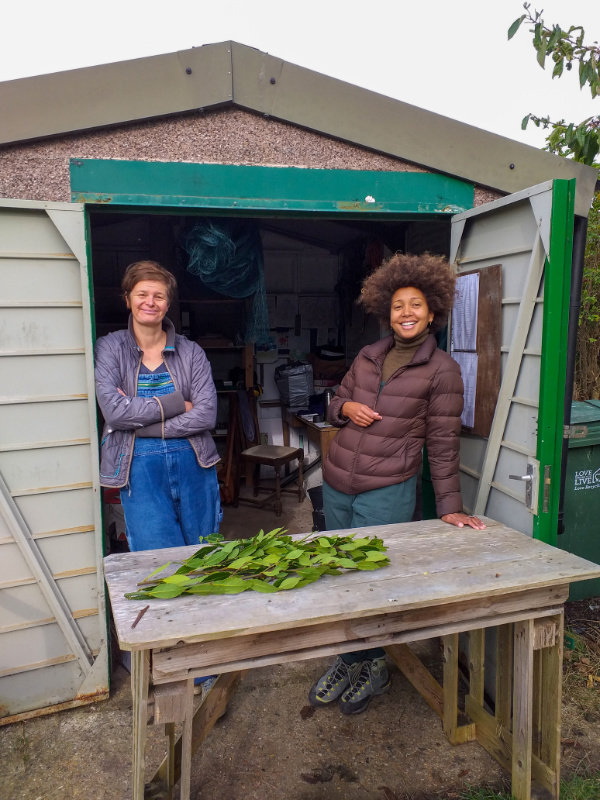
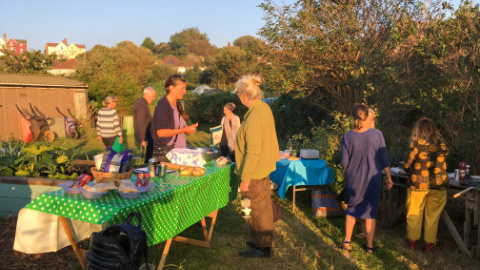
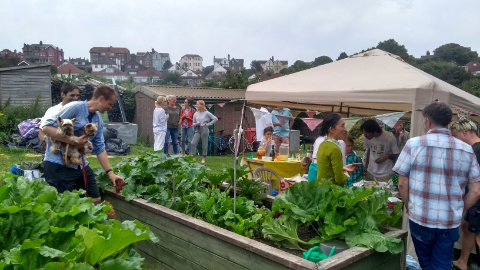
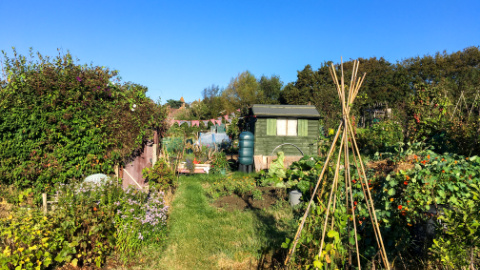

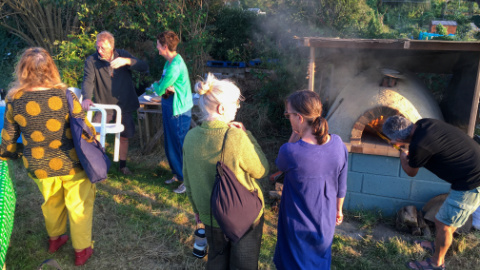
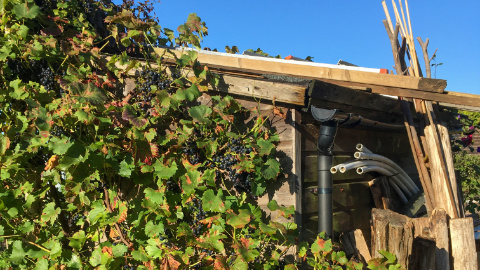
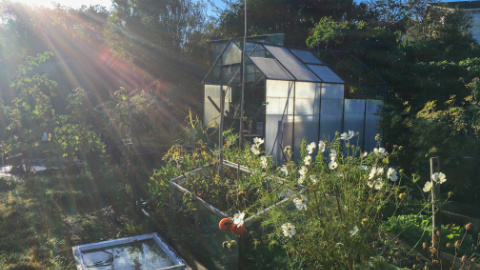
Them’s the Rules…
The Association itself is bound by a set of rules, based on the model produced by Hastings Borough Council for the allotments which they manage – although Marina Allotments is independent, we are bound by the lease with the Council. As plot holders, you are bound by the rules that come with the tenancy agreement, which you signed up to on becoming a member. (If you have mislaid your copy and need to refresh your memory, you can find the full allotment rules here) There is also a slew of government legislation regarding allotments, not to mention the rules of common sense and even common decency. You are encouraged to familiarise yourself with the rules early in your tenancy, but to simplify things a little while you get started, here are some of the most important:
No sale of produce
You can’t sell what you grow for money. However, you can swap things and you can, of course, donate produce to allotment events and sales – the more the merrier.
No livestock
While the law allows for domestic chickens and / or rabbits to be housed on an allotment, permission nevertheless remains at the discretion of the landowner, which in our case is the Council – and for the last 20 years or so, it has maintained a blanket ban. It is, however, possible to look after bees, with the permission of the committee, as long as you have the necessary qualifications and valid insurance cover.
On the other hand, canine friends are allowed on site provided they are always on a lead.
Rubbish collections
Due to cutbacks, there are no Council rubbish collections. This means that members must dispose of any waste on their plot themselves by taking it home or to the dump, by composting green waste, or by burning suitable items outside of the voluntary bonfire ban.
Bonfires
There is a ban on bonfire for the burning of waste from the beginning of May to the end of September. Members are allowed to burn waste outside these months, but please try to be considerate to other members and to residents who live nearby – from whom we all too often receive complaints, alas. Some advice:
• If green waste, such as diseased plants and perennial weeds, must be burned, please dry them out as far as possible first and burn at a high temperature,
for example in an incinerator.
• If you must have a bonfire, please, please do so at a time likely to cause the least annoyance.
Water
It goes without saying that water should be used responsibly: hotter and drier summers are causing our water bills to shoot up to eye-watering levels. Never use a hosepipe directly from the mains to water your crops – you can, however, fill a butt or tank with a hosepipe. If you have a shed or greenhouse, fit guttering to collect rainwater.
Sheds and Greenhouses
You need to gain approval for the construction of any shed or greenhouse. Technically, this has to be granted by the Council, but in practice you simply have to provide a plan to the Committee, who will check that it’s OK and give the go-ahead. It does not require planning permission. What you can have is slightly complicated by two sets of rules, one laid down by the Council (specified in the lease), and one by our association (specified in the tenancy agreement). To ensure you comply with both, read on…
What you can have on your plot
You can erect a standard 4’ x 6’ shed if your plot is five or more rods. Members with smaller plots must consult the committee about options. You can have no more than one shed and one greenhouse or polytunnel on one plot.
What your Greenhouse should be like
Greenhouses should be of ridge type, not exceeding 80 square feet (l0ft length and 8ft width) floor area, and not more than 7ft 6ins in height at the ridge. Construction may be of timber or metal, painted white or aluminium, or in the case of cedar or other hardwood, treated with preservative oil. It must be fixed to an appropriate base. Polytunnels of similar specification are also permitted.
What your shed should be like
Sheds must not exceed 24 square feet floor area and be more than 6ft 6ins high. Construction may be of timber and of proprietary or private design, but at all times not of unpleasing appearance. They must be painted dark or natural green or treated with a suitable preservative. Timber cladding should be of close boards, tongue and groove, Waney elm or larch overlap. Roofs must be boarded and covered with mineralised felt.
You will need:
A drawing of your plot, with the intended site of the new shed and/or greenhouse marked. Please discuss the positioning with your neighbours to ensure that they have no objection; for example, that there is no risk of a shadow falling across their plot. Also make sure that there is no risk of the new structure encroaching on a path. And that’s it. Email an image of the plan to the committee and they will discuss it at their next meeting.
Where to Begin
Welcome to your plot! We really hope you like it and are relishing the possibilities and itching to get cracking. We also hope that it isn’t too overgrown, that the soil isn’t too terrible, and that it doesn’t seem to be too daunting. But we’re all too aware that it might be.
Unfortunately, it is in the nature of allotments that they often become overgrown before changing hands, it can sometimes be hard to know where to start. The best advice is to be patient.
Start slowly and cultivate a little at a time. Don’t try to clear the whole plot at once. Plan what you hope to achieve. Do some background reading: see pages 24-25 for some recommended books and information sources. And have a read of this excellent, very practical advice, from Helen Yemm, writing in the Daily Telegraph:
Knobble perennial weeds before you start, particularly if you plan long-term crops such as asparagus and soft fruit. Fork out roots, smother with black plastic or cardboard covered with wood chippings if available to make the plot more attractive, in extreme cases), cover and forget two thirds of the ground for that first season, and just grow spuds whose very cultivation helps cleanse the soil of weeds on the remainder.
The most common perennial weeds on our site are couch (pronounced cooch) grass, bindweed and mare’s tail. Couch grass can be added to the large pile to the left of the main gate next to the compost bins, but the other two should either be burned or removed from the site, or they can be composted if you know what you’re doing (see above). Never use a rotavator before you have dug out perennial weeds. This only chops up the roots, which spread and grow back stronger than ever, making a bad situation worse.
Remember that weed seeds remain viable in soil for years. Never let weeds grow large – hoe them out as tiddlers on dry days.
Boundary paths are weed hotbeds too, so mow and edge them regularly. We’re not looking for anything too neat and tidy – all concrete paths, chain-link fencing and stifling rules – but housekeeping benefits everyone.
Planning your space
Although some see the benefits of investing money on infrastructure initially, so they can start growing quickly, others favour a slower more organic approach. Reduce, recycle, re-use wherever possible. Compost bins can be made from wooden pallets, old scaffolding boards and split tree trunks make good edges for raised beds. Ingenuity is honoured and respected among allotmenteers.
The way you grow your crops is very much down to your personality and what you want to produce: some favour raised beds separated by defined paths covered in weed-suppressing fabric and wood chip; others prefer the traditional open bed system of growing in rows maybe divided by mown grass paths. There are pros and cons to each. Some allotmenteers practise strict crop rotation and grow in blocks of single crops; others interplant crops and flowers in a glorious biodiverse mixture. There is not enough space to explore in depth here, but there is a wealth of information on the internet to tap into on all aspects of growing – some suggestions are given at the end.
Regular soil improvement: this is the key to growing healthy produce. Add as much organic matter as you can, usually between autumn and early spring when the soil is bare. This can either be dug in, in the traditional way, or simply spread on top for a ‘no-dig’ approach. This method avoids disrupting the beneficial ecosystem in the soil and helps suppress weeds. (It’s also less work!)
Compost as much as possible: there is nothing more satisfying than creating that ‘black gold’ to put back in/ on your soil, and it’s all for free. There is masses of information online about making good compost.
Crop protection is key: ‘wildlife’ (also known as pests, particularly flying ones) can quickly get the upper hand. Hoops of hazel, cut from hedges (failing that, cheap pliable plumbing pipe from DIY stores), make good supports for protective meshes and netting. And which netting? Drapey ‘pond netting’ is easier than that annoyingly springy nylon stuff that is hard to peg down and control.
Especially if you live some distance away, a small padlocked shed (with a water butt) is a boon, with hooks to keep tools (and that essential old fleece) off the floor. As is an old chair.
Avoid using pesticides as much as possible, and think first about physical methods of control such as netting, or growing plants in ways that support each other and reduce pest and disease attacks. It’s good to think beyond our own plot boundaries and see the whole allotment site as a diverse ecosystem. We have devised a green charter, available on the website, which acts as a guide to growing in a way that is in tune with the environment.
And on What to Grow
First, some ‘don’ts’. Don’t grow too much of any one thing; get the hang of sowing seeds a little at a time every few weeks (a tough one, that) and even if you don’t practise classic crop rotation, at least don’t grow the same crop in the same place two years running.
Obviously only grow what you like to eat, but there are definitely ‘easy’ and ‘difficult’ crops. Potatoes and leeks as well as onions (from sets) all belong in the easy camp, peas and beans, too, if you keep the birds and mice away. Strawberries (netted) and autumn raspberries (no need to net) are a fabulous and easy must. Unless you live on the doorstop, grow cut-and-come-again salads at home since they need almost daily snipping. Parsnips are tricky to germinate; carrots generally need fine soil (adding as much sand as compost before sowing helps). Without efficient mesh and netting protection (those voracious pigeons again, and butterflies), don’t grow any form of the space-greedy winter cabbage family. Chard and perpetual spinach, however, are long-life, relatively low-maintenance crops worth learning to love, if you don’t already. Also try intercropping and companion planting – greater biodiversity helps reduce pest and disease problems.
Free, or even cheap, food this is not – well, certainly not at first. Needless to say, allotment growing is more cost effective if you buy (and share) seed, rather than plug plants. Once you are established, producing compost and saving seed from your crops, you go into a different economic league.
Finally, something slightly controversial: don’t listen to the killjoys. It is perfectly OK to grow flowers for picking on your allotment – and they encourage beneficial insects.
Look around the allotment and get ideas from what others have done. If you’re unsure about something – for example, what to do about perennial weeds, or what to plant in your soil – ask a neighbour. Allotmenteers are invariably delighted to offer advice (in fact, the problem is usually getting them to stop!).
And remember: it won’t always be plain sailing. Working an allotment can be tough, it’s not just for summer. It requires commitment and a lot of hard work to maintain. There is a big difference between a garden or a window box and growing food on an ugly, exposed, weedy rectangle that you don’t actually own, and which is possibly quite some distance from home. But stick with it, and you’ll get there.
If you’re struggling, please, please talk to someone! We are all of us stewards of the land that makes up our plots. We have a responsibility to cultivate that land – and are required by the rules of the allotment to do so. This is more important than ever now that demand for allotments so far exceeds supply and waiting lists are so long. If for whatever reason, you no longer can, or wish to, maintain your plot, please, please give it up. Whatever you do, don’t just disappear: that’s how allotments get overgrown in the first place!
Further Reading
Online
Allotment Growing
Leading allotment blog with tons of useful info and lively
forums.
www.allotment.org.uk
Huw Richards
Hundreds of useful videos on veg growing:
www.youtube.com/c/HuwRichards/about
Charles Dowding
The no-dig guru – lots of useful advice:
www.charlesdowding.co.uk
Books
Veg Patch: River Cottage Handbook No.4 by Mark Diacono
Guide to setting up a kitchen garden from scratch, with A-Z of veg, tips on planning, soil conditions, and recipes too. Good intro to creating an (organic) allotment – and great size for a shed too.
The Vegetable Garden Displayed by Joy Larkcom
A classic guide to traditional vegetable gardening. Month-by-Month Organic Gardening (The Green Gardener’s Calendar) by Lawrence D Hills, a founder member of the Henry Doubleday research Association.
The Organic Garden by Sue Stickland, of the National Centre for Organic Gardening
Wildlife Gardening by Kate Bradbury
Full of tips on how to attract more wildlife to your plot, explaining how to create the perfect habitat for species you’d like to welcome onto your plot. It includes practical projects such as creating bee hotels or compost corners as well as fact files for the UK’s most common garden species.
Edible Paradise by Vera Greutink
Learn how to create your own no-dig, organic garden with permaculture design and techniques, including herbs, vegetables and flowers, so your garden is both beautiful and productive.
The Forager’s Garden by Anna Locke
This practical guide shows you how to create your own edible sanctuary, for year-round food, in any sized garden, with minimal effort and care for Nature too. Applicable to any small growing space.
Edible Paradise and The Foragers Garden are both available from Permanent Publications.
https://shop.permaculture.co.uk